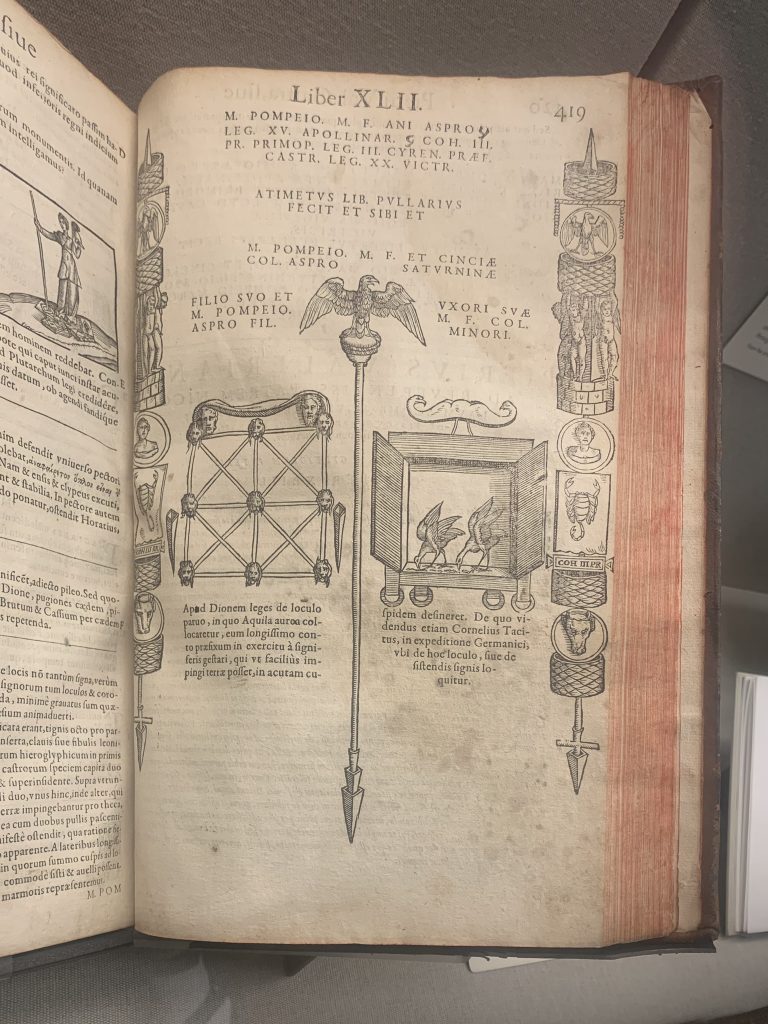For our April museum visit we headed to the Grolier Club, an exclusive club for antiquarian book dealers and collectors, for their exhibition “Judging a Book by Its Cover,” which includes a number of impressively-bound fifteenth-, sixteenth-, and seventeenth-century volumes as well as more-recent items.

It was interesting to be reminded of the historical separation between printing and binding, with many books being printed and sold without covers, which their owners then paid to have added by other specialists. There were also numerous examples on display of books which had been repeatedly rebound — for example, to replace attractive but less-durable cloth covers with harder-wearing leather panels, or to combine several small books by different authors into a single larger volume.



Before leaving, we stopped by their smaller exhibit on hieroglyphics, which also included a couple of very early printed books.

